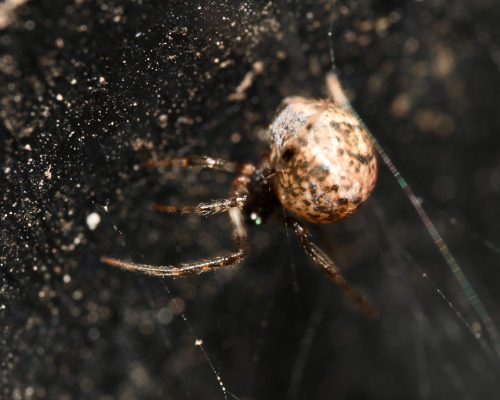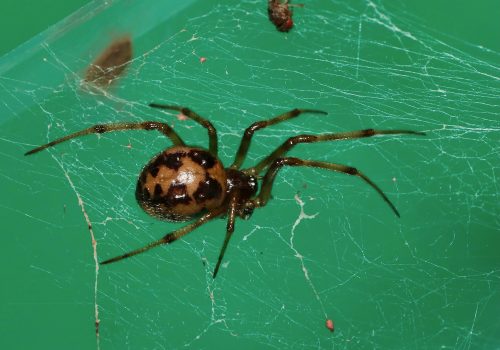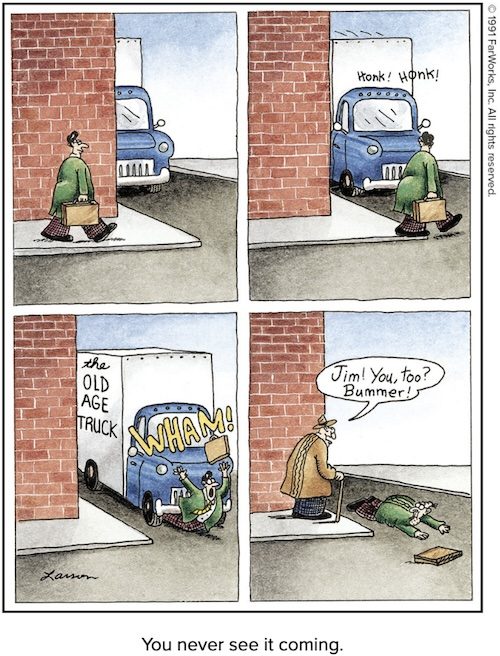Many people don’t seem to realize that City Journal is not a science journal, but a conservative policy rag published by the right-wing think-tank, the Manhattan Institute for Policy Research. Typically, the only “science” articles they publish are bigoted nonsense to advocate for discrimination against non-white people and gay and transgender folk, which they unironically claim is actually bias against white straight people. They publish Chris Rufo and Colin Wright and Heather Mac Donald, for christ’s sake. This is the face of the New Racism, same as the old racism, that cloaks itself in assertions that they’re just talking about Science.
So now City Journal is condemning Scientific American for going “woke,” being in lockstep with progressive beliefs
(horrors!), and just generally abandoning science in favor of that damnable belief that the human equation is an important factor in science. SciAm has surrendered to progressive ideology,
that is, they don’t support the tired old conservative ideas that the City Journal favors. City Journal has published a long article documenting how SciAm betrayed true
science. It’s not very credible to begin with since it comes straight from one of the modern purveyors of bad science — it’s a bit like reading Joseph Mercola complaining about Science-Based Medicine — but let’s take a look at how they make their case.
Right off the bat, I’m unimpressed. Their first case is Michael Shermer, the ghastly conservative Libertarian skeptic who was credibly accused of sexual assault, who was a columnist for SciAm until he was let go, finally, to the cheers of many. His column reeked. But, apparently, like many conservative writers, he expected to be employed by them forever, and was dismayed when SciAm stopped buying his drivel. He was shocked when they turned down one of his columns.
The following month, Shermer submitted a column discussing ways that discrimination against racial minorities, gays, and other groups has diminished (while acknowledging the need for continued progress). Here, Shermer ran into the same wall that Better Angels of Our Nature author Steven Pinker and other scientific optimists have faced. For progressives, admitting that any problem—racism, pollution, poverty—has improved means surrendering the rhetorical high ground. “They are committed to the idea that there is no cumulative progress,” Shermer says, and they angrily resist efforts to track the true prevalence, or the “base rate,” of a problem. Saying that “everything is wonderful and everyone should stop whining doesn’t really work,” his editor objected.
I think you can see the problem. He’s claiming that the people who are fighting for progress don’t believe there has been any progress, a claim that is clearly false, but fits well with the Manhattan Institute dogma that everything is just automatically getting better, so why struggle? I can see why SciAm might be uninterested in promoting the contradictory garbage that Shermer kept writing, but then he just makes it worse.
Shermer dug his grave deeper by quoting Manhattan Institute fellow Heather Mac Donald and The Coddling of the American Mind authors Greg Lukianoff and Jonathan Haidt, who argue that the rise of identity-group politics undermines the goal of equal rights for all. Shermer wrote that intersectional theory, which lumps individuals into aggregate identity groups based on race, sex, and other immutable characteristics, “is a perverse inversion” of Martin Luther King’s dream of a color-blind society. For Shermer’s editors, apparently, this was the last straw. The column was killed and Shermer’s contract terminated. Apparently, SciAm no longer had the ideological bandwidth to publish such a heterodox thinker.
Notice that we’re already seeing the usual suspects pop up in the first few paragraphs: Pinker, Haidt, Mac Donald. We’re also seeing examples of Shermer’s self-serving dishonesty. Intersectional Theory lumps individuals into aggregate identity groups
? Uh, what? Intersectional theory isn’t about “lumping” anything, but about teasing apart the multiple factors that influence individuals.
Intersectional theory views the categories of intersecting relations such as race, gender, social class, sexuality, ability, and age as interrelated and mutually shaping one another. Taking these intersecting factors into consideration paves the way for understanding and explaining complexity in individuals, the world, and the human experience.
As a concept, intersectional theory contrasts monism, which is the idea that each factor of an individual (e.g., race and gender) can be adequately understood or investigated separately from one another, as a single dimension.
Fire Shermer for that biased misrepresentation, if anything. Unfortunately, biased misrepresentation is City Journal’s trademarked behavior, and if SciAm rejects it, he can find a new home at City Journal, which hates social justice with a fiery passion.
At the same time, SciAm dramatically ramped up its social-justice coverage. The magazine would soon publish a flurry of articles with titles such as “Modern Mathematics Confronts Its White, Patriarchal Past” and “The Racist Roots of Fighting Obesity.” The death of the twentieth century’s most acclaimed biologist was the hook for “The Complicated Legacy of E. O. Wilson,” an opinion piece arguing that Wilson’s work was “based on racist ideas,” without quoting a single line from his large published canon. At least those pieces had some connection to scientific topics, though. In 2021, SciAm published an opinion essay, “Why the Term ‘JEDI’ Is Problematic for Describing Programs That Promote Justice, Equity, Diversity, and Inclusion.” The article’s five authors took issue with the effort by some social-justice advocates to create a cute new label while expanding the DEI acronym to include “Justice.” The Jedi knights of the Star Wars movies are “inappropriate mascots for social justice,” the authors argued, because they are “prone to (white) saviorism and toxically masculine approaches to conflict resolution (violent duels with phallic light sabers, gaslighting by means of ‘Jedi mind tricks,’ etc.).” What all this had to do with science was anyone’s guess.
Let’s deal with each of those SciAm articles.
- The ‘white patriarchal math’ article discusses how “fewer than 1 percent of doctorates in math are awarded to African-Americans” and only 30% to women. It mentions how historically women and black people were excluded from doctoral research programs. It describes the experiences of black women mathematicians who faced discrimination. These are facts. It’s an important issue in science, where we rely on a foundation of strong mathematical thinking.
- The ‘obesity’ article explains the connection with racism.
living in racially segregated, high-poverty areas contributes to disease risk for Black women. Low-income Black neighborhoods are often disproportionately impacted by a lack of potable water and higher levels of environmental toxins and air pollution. These factors add to the risk for respiratory illnesses such as asthma and lung disease. They also increase the chance of serious complications from COVID-19.
Further, these neighborhoods typically have a surfeit of fast-food chains and a dearth of grocery stores offering more nutritious food choices. Food insecurity, which is defined as the lack of access to safe, affordable and nutritious foods, has a strong association with chronic illness independent of BMI.Facts. Why does City Journal hate them?
- The ‘Wilson’ article both praises him and points out that “His influential text Sociobiology: The New Synthesis contributed to the false dichotomy of nature versus nurture and spawned an entire field of behavioral psychology grounded in the notion that differences among humans could be explained by genetics, inheritance and other biological mechanisms” and that “It is true that work can be both important and problematic—they can coexist.” It’s main sin seems to be that it promotes nuance rather than the black-and-white dichotomy City Journal favors.
- The ‘JEDI’ article argues that “When we label our initiatives, we must be careful about the universe of narratives and symbols within which we situate our work—and the cultural associations and meanings that our projects may take on, as a result.” Adopting pop culture is a mixed bag, and we should think carefully about the kind of baggage we take on. What it has to do with science ought to be obvious, that a magazine that’s all about popularizing science should be aware of the political implications of the language it uses. It is an entirely appropriate article for SciAm.
City Journal is relying on a knee-jerk reaction by their conservative readers to any accusation of bias, even when that bias is patent and easily demonstrated.
City Journal needs to dip into its well of familiar conservative wackos to further their case. Here’s Geoffrey Miller.
“The old Scientific American that I subscribed to in college was all about the science,” University of New Mexico evolutionary psychologist Geoffrey Miller told me. “It was factual reporting on new ideas and findings from physics to psychology, with a clear writing style, excellent illustrations, and no obvious political agenda.” Miller says that he noticed a gradual change about 15 years ago, and then a “woke political bias that got more flagrant and irrational” over recent years. The leading U.S. science journals, Nature and Science, and the U.K.-based New Scientist made a similar pivot, he says. By the time Trump was elected in 2016, he says, “the Scientific American editors seem to have decided that fighting conservatives was more important than reporting on science.”
Evolutionary psychologists shouldn’t get to accuse others of being flagrant and irrational! Notice, though, that it’s not just SciAm, it’s also Nature and Science and New Scientist, and also mentioned is the New England Journal of Medicine, that is getting “woke”. Maybe these “heterodox” thinkers should consider the possibility they’re on the wrong side, when all the eminent journals are against them?
This isn’t about fighting conservatives, but about fighting for reality, that thing that repels conservatives. City Journal goes on to complain that SciAm and other prominent science journals broke their apolitical stance by openly endorsing Biden over Trump in the last election. They don’t consider that maybe, just maybe, scientists ought to oppose political candidates that are so blatantly anti-science. There’s a point where impartiality becomes absurd.
Oh joy, then City Journal spends a great deal of effort promoting their obsessions about COVID. They think the Great Barrington Declaration was a work of science rather than a bizarre ideological claim that would never have worked, and that it was a media conspiracy to discredit them. Also, they are very irate that the “lab-leak” hypothesis of COVID’s origins was dismissed.
The reason the “lab-leak” nonsense was ignored was because
(1) the evidence strongly favors a natural origin, (2) there is no scientific evidence to support the claim that the WIV scientists were working on SARS-CoV-2 before the pandemic started, (3) the most knowledgeable science experts agree that a natural origin is the most likely scenario, and (4) the media is misrepresenting the science and treating the two competing explanations as equivalent.
This is a trend in City Journal. They are also climate change deniers, while SciAm accepts the consensus of climatologists…therefore SciAm preaches bad science.
The mainstream science press never misses an opportunity to ratchet up climate angst. No hurricane passes without articles warning of “climate disasters.” And every major wildfire seemingly generates a “climate apocalypse” headline. For example, when a cluster of Quebec wildfires smothered the eastern U.S. in smoke last summer, the New York Times called it “a season of climate extremes.” It’s likely that a warming planet will result in more wildfires and stronger hurricanes. But eager to convince the public that climate-linked disasters are rapidly trending upward, journalists tend to neglect the base rate. In the case of Quebec wildfires, for example, 2023 was a fluky outlier. During the previous eight years, Quebec wildfires burned fewer acres than average; then, there was no upward trend—and no articles discussing the paucity of fires. By the same token, according to the U.S. National Hurricane Center, a lower-than-average number of major hurricanes struck the U.S. between 2011 and 2020. But there were no headlines suggesting, say, “Calm Hurricane Seasons Cast Doubt on Climate Predictions.”
Most climate journalists wouldn’t dream of drawing attention to data that challenge the climate consensus. They see their role as alerting the public to an urgent problem that will be solved only through political change.
Do you want to know City Journal’s position on transgender issues? No, you don’t. They cite Abigail Schrier and Jesse Singal and the Cass Report, so you already know where they stand.
Scientific American has yet to offer an even-handed review of the new scientific skepticism toward aggressive gender medicine. Instead, in February, the magazine published an opinion column, “Pseudoscience Has Long Been Used to Oppress Transgender People.” Shockingly, it argues for even less medical caution in dispensing radical treatments. The authors approvingly note that “many trans activists today call for diminishing the role of medical authority altogether in gatekeeping access to trans health care,” arguing that patients should have “access to hormones and surgery on demand.” And, in an implicit warning to anyone who might question these claims and goals, the article compares today’s skeptics of aggressive gender medicine to Nazi eugenicists and book burners. Shortly after the Cass report’s release, SciAm published an interview with two activists who argue that scientists questioning trans orthodoxy are conducting “epistemological violence.”
Of course City Journal misrepresents the article — you should expect that at this point. It does accurately describe the long history of oppression of trans people, and yes, current TERFs/Gender Criticals . I guess City Journal couldn’t admit the accuracy of the title. They also can’t argue against the idea of epistemological violence, since that’s exactly what the Manhattan Institute does. And the comparison to Nazis isn’t that great a reach, since Neo-Nazis and anti-trans activists are finding common cause today.
Are the claims of trans activists, as reported in SciAm, that radical? Nope. They sound like humane, common sense ideas.
Trans activists have fought with the World Professional Association for Transgender Health, the organization that maintains these standards of care, by demanding greater bodily autonomy and depathologizing transsexuality. This includes pivoting to an informed consent model where patients make decisions about their own bodies after discussing the pros and cons with their doctors. Trans activists have been rallying against medical authority since the early 1970s, including calling for access to hormones and surgeries on demand.
There’s nothing wrong with autonomy, consent, and resistance to an authority that has been historically in opposition to the needs of human beings. Unless, of course, you’re a City Journal reader. They hate that stuff.
At least the case is clear. If you think climate change is real, that we should respond to epidemics with evidence-based policies, that we should not ignore the consequences of racist policies, that trans people have rights, that Nazis are bad, and that science has social obligations, then read Scientific American (and Nature and Science and New Scientist and the New England Journal of Medicine.) Do read critically, though — you don’t have to agree with every word in those journals.
If you oppose those ideas, read City Journal.









